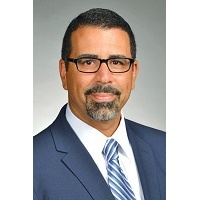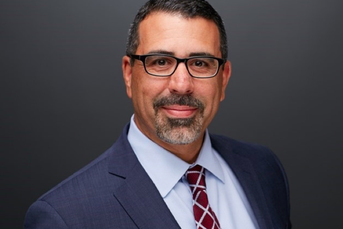Don’t Pave the Cow Paths… Blaze your own Path
Learn more about how leaders should focus on exposing data that can help drive long-term business growth
“They just keep paving the cow paths!” I first heard this phrase over a decade ago in Boston, where every day I would commute to work through twisting, potholed, impossibly crowded roads. A colleague, a Boston native, explained the legend behind this phrase: centuries ago, the city’s downtown street plan was designed by cows – whose meandering meadow paths were later formalized into carriage roads, which were then paved with cobblestones, which were later covered with asphalt, and so on. The lesson: incremental improvements can never quite overcome the limitations of the underlying design.
I was recently reminded of this lesson when I reviewed the results of the InvestmentNews 2017 Adviser Compensation & Staffing Study which analyzed data from more than 350 advisory firms. At a high level, the study found that firms in 2016 achieved a median revenue growth rate of 5%. This growth rate was down from 8% in 2015, and was about a third of the growth rates reported for 2014 (14%) and 2013 (16%).
This finding may signal that the advisory industry is starting to mature, with slower, more measured growth continuing in the years ahead. And yet I was also struck by what firms revealed about their capacity to grow their businesses. Two out of 10 firms (20%) reported that they are currently at capacity, meaning that they don’t feel as if they can grow any further. Another 7 out of 10 firms (69%) reported that they’re very near their capacity limits. This sense of “reaching the limits” may, in part, explain why some are not positioned to achieve the growth rates of a few years ago.
How do firms actually measure their own “capacity” to handle existing or new business? The study found that fewer than half apply a revenue-based or AUM-based metric to assess the capacity of their practicing partners or lead advisors, and even fewer look at the number of clients served by these professionals [See Figure 1]. What this tells us is that, for many firms, the perception of being at or near capacity may not be supported by a rigorous, data-driven assessment process. The time is now for firms to apply such a process, if they haven’t already, but it does require them to reassess their business strategy. Otherwise we are inclined to make the next incremental decision, one that is built upon the previous decisions that may haven’t not been driven by data and a long-term vision for what you are building.
Increasing Capacity
As we close out 2017 and market performance having been very strong, don’t let the strong revenues generated from market performance distract you from the underlying need to add capacity for the future. I would encourage firms that now is the absolute perfect time to invest in your business in a meaningful way. For many firms, the starting point for an assessment is a time study that provides an estimate of how many clients the firm might theoretically be able to serve. This time study doesn’t have to be complicated – using my own back-of-the-envelope math, let’s say that an advisor works 40 hours a week, minus vacations and other time off. If we assume 1800 available hours of time per advisor, and an advisor spends about 20 hours per client on service, we can estimate that the advisor would have the capacity to serve about 90 clients. This calculation, by the way, tracks pretty closely with clients-per-advisor ranges noted in the survey (that is if the adviser spends 100% of their time with clients).
If a firm determines that its advisors are serving 80 clients, they may decide to pursue any number of strategies to raise that number to 90 or 100 or even more clients. For example:
- Adopt more of a team approach, leveraging the time of support advisors, to sharpen the lead advisor’s focus on the activities that add the greatest value.
- Use technology to automate certain functions; in particular, business partners might have plug-and-play capabilities that can free up capacity across the firm
- Segment the client experience so that some might receive 10 hours of service and others might receive 8 (as long as both segments are satisfied with the service they receive)
- Bring on professional managers to handle select aspects of the business operations, such as strategy, marketing and finance, so advisors can focus on putting their hard-earned insights to work for more clients
To sum up – the demands of a busy client load can leave firms feeling stretched for time, but lacking the clarity to see exactly how their time is being spent. Heck, it feels good to check things off of your to-do list, but do those little things add up to the big push your business needs to grow? Increasing capacity to drive business growth requires more than gut intuition and full agendas. It requires firm leadership to fight the urge to react to the day-to-day, and work with their teams to expose the data that can help drive long-term business growth.
Meander no more
By their nature, such improvements will be incremental and, ultimately, transitory. This is why I always encourage clients to dig down one additional layer in their analysis, to consider a larger question you are building your firm from scratch, considering the competitive landscape and your vision for the future, what decisions and investments would you be making? Posing this question to our clients often leads to rich discussions about the firm’s strengths, its ideal clients and what its leaders hope to achieve. Though it can be more comfortable to meander along familiar paths, “fortune favors the bold.” True business growth can only be achieved by those who can plan for the future and blaze their own trail.
BNY Mellon’s Pershing provides a comprehensive array of practice management resources, programs and personalized support to help advisory firms manage and grow their business. You can engage with our consultants in multiple ways—receive guidance for implementing one of our advisor programs, attend a Pershing event or practice management forum, or online through our webcasts. You can learn more at pershing.com.
About the Author
Gabriel Garcia is a Managing Director for BNY Mellon’s Pershing Advisor Solutions in the Relationship Management group. Mr. Garcia works with registered investment advisers (RIAs) interested in developing and growing their practices, helping them to manage business issues they face. He engages advisers to help them make informed decisions around maximizing Pershing’s resources and evolving their firms to become more scalable, profitable and productive. Mr. Garcia spent his previous 15 years with Charles Schwab & Co., where he held several leadership positions in sales, training and consulting. His last six years were spent working directly with RIAs. Mr. Garcia has consulted with more than 100 firms ranging in AUM from $50M to $3B. He also is a frequent speaker at industry and national conferences. Mr. Garcia has 20 years of experience in financial services. Mr. Garcia earned a Bachelor of Science degree in Finance and Business Administration from Radford University.
Learn more about reprints and licensing for this article.





